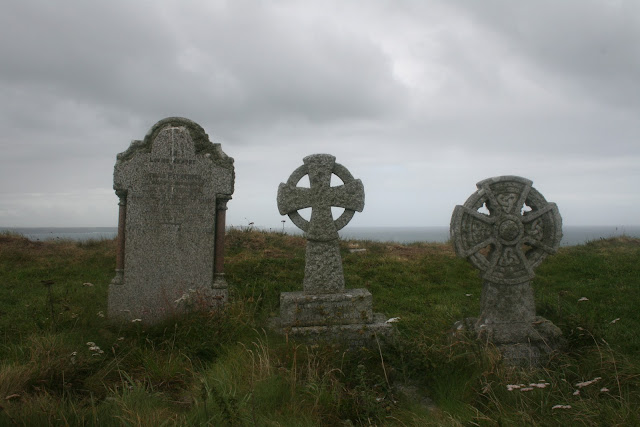When I met Michael Parker Pearson, he found it quite funny that I just happened to be an archaeology student from California who, more or less, stumbled into this site. He asked me if I wanted to jump in and dig, and I said I'd love to but I have to take my rental car back to Fishguard and get on the ferry to Ireland. Right away I thought to myself, "What the hell are you saying, girl?" I loitered around for about twenty more minutes, then asked one of the archaeologists, Duncan, if he'd like a break. He seemed eager for one. Let me tell you, leather biker boots are NOT ideal excavating shoes.
But there I was, touching a blue stone possibly meant for a henge. Parker Pearson thinks that perhaps the builders of Stonehenge didn't come to this quarry themselves, but took the stones from an existing, already-ancient stone circle. Some of the earliest people in the British Isles are from this valley, and they built many stone circles. Its possible, then, that for whatever reason, the stones from this quarry, meant for another henge long before, were removed and incorporated into a wider-ranging ancestral henge on the Salisbury Plain - Stonehenge.
The work that Parker Pearson and his colleagues are doing now is sourcing materials from Stonehenge. Alasdair Pike, for example, is sourcing the gold found there. XRF analysis and other new technological methods allow archaeologists to find the origins of materials in a way that has never been possible before, so this work is truly groundbreaking.
The more time spent analyzing Stonehenge, the more it seems that the builders were making a concerted effort to unify different peoples of the British Isles, as there are already ties to Scotland, Wales, and possibly the continent. It will be interesting to see where these other materials are coming from. We're at a place in history where many things will be made clear to us about Stonehenge that have never been before. |


































































